If you’ve ever wanted to learn and have a cultural glimpse into the Spanish regions, there is no better to place to visit than Poble Espanyol or Spanish Village in Barcelona. It was surprising to find that many people we know who have visited the city had not heard of or set foot at this Iberian looking village. See what they missed and what this wonderful attraction has to offer visitors.
Poble Espanyol was built for Barcelona’s 1929 World Fair. It resembles a large village with 117 replicas of actual sized buildings from various Spanish regions. The planners of Poble Espanyol traveled to over 1,500 Spanish villages to capture the authenticity of the buildings and its surrounding areas.
This Spanish open –air museum became such a popular attraction that it was saved from being demolished after the fair and exhibition. It was restored and repaired in the 1990s after falling in despair. More money was invested in Poble Espanyol between 2008 to 2018 to modernize the attraction.
Located just up the street from the Montjuic area and the Magic Fountain, Poble Espanyol was a relaxing uphill walk along a park like setting with a view of the castle and part of the city. The first structure we encountered was the entrance which was flanked by two towers. It looked like we were entering a castle.
This gate was a replica gate based on the Puerta de San Vicente or Gate of St. Vincent located in the medieval and UNESCO heritage town of Avila. This gate is one of several that was part of the walls that enclosed the city.
Two large sculptures of a man and woman dressed in early 20th century outfits seemed to guard the entrance. We visited during New Year’s Day so the holiday decorations were still everywhere which added a lot of colors and added a festive ambience.
We found more of these giant sculptures as soon as we entered. They were enclosed in glass cases each had a name, wearing outfits representing appropriate seasons and a person’s life stage.
The Poble Espanyol buildings are organized into Spain’s four geographical areas: the north (Aragon, Basque Country, Galicia, etc.), central (Madrid, Castilla-La Mancha), the Mediterranean(Catalonia,Balearic Islands, etc.) and the south (Andalusia). We loved seeing the different architectural styles of the buildings throughout the village. It showed a great representation of Spain’s cultural diversity.
It was no surprise to find a Plaza Mayor near the entrance. Like many towns across Spain, there is usually a large public and gathering area surrounded by restaurants and shops. This particular replica was inspired by the plaza in the mountain town of Riaza located about 75 km from Segovia.
One of the most prominent structures in Poble Espanyol is the Torre de Utebo. This was a replica of the Church of Santa Maria’s tower in the town of Utebo in the Zaragoza (Saragossa) province in northern Spain. If the replica was this beautiful, we could only imagine how the original must look like.
The original was built in the 16th century and a great example of Aragonese Mudejar architecture. The tower has a square base with an octagonal upper portion. The decorations are a combination of Mudejar, Gothic and Renaissance with a brick and ceramic exterior and over 8,000 tiles in various colors and motif.
Be sure to walk down the many alleys and small streets. We loved wandering around and finding charming corners. This was supposed to represent the Valencia area.
My teen daughter’s favorite area was this section with the white washed walls and blue potted plants on the walls. This area was a representation of one of Andalucia’s white villages that sits on a rocky cliff – Arcos de la Frontera in Cadiz province. It reminded us very much of the Greek island of Santorini.
We really enjoyed the “Fiesta” exhibit. This was a multimedia show in its own building that opened in 2018. The show gave us a glimpse into some of Spain’s most popular cultural festivals through a state of the art presentation including 3-D glasses. The show was about 10 minutes and we went as groups. My kids particularly liked sitting on beanbags as part of the experience.
After watching this show, we really want to see El Castells (the human towers of Catalonia) in Tarragona and the Tomatina festival (tomato throwing festival or world’s largest food fight) in Bunol near Valencia. There were plenty of information for all the festivals on the film to read about. “Fiesta” is included with your entrance ticket.
There is also a multimedia exhibit called “Feeling Spain” which has five audio-visual screens throughout the village. It offers a way for visitors to see landscapes, hear the sounds and even smell things common to that region of Spain.
You can find them in The North, Camino de Santiago, Catalonia, the South and in Bajada de Cervantes. It’s a wonderful way for visitors to learn and experience about these regions.
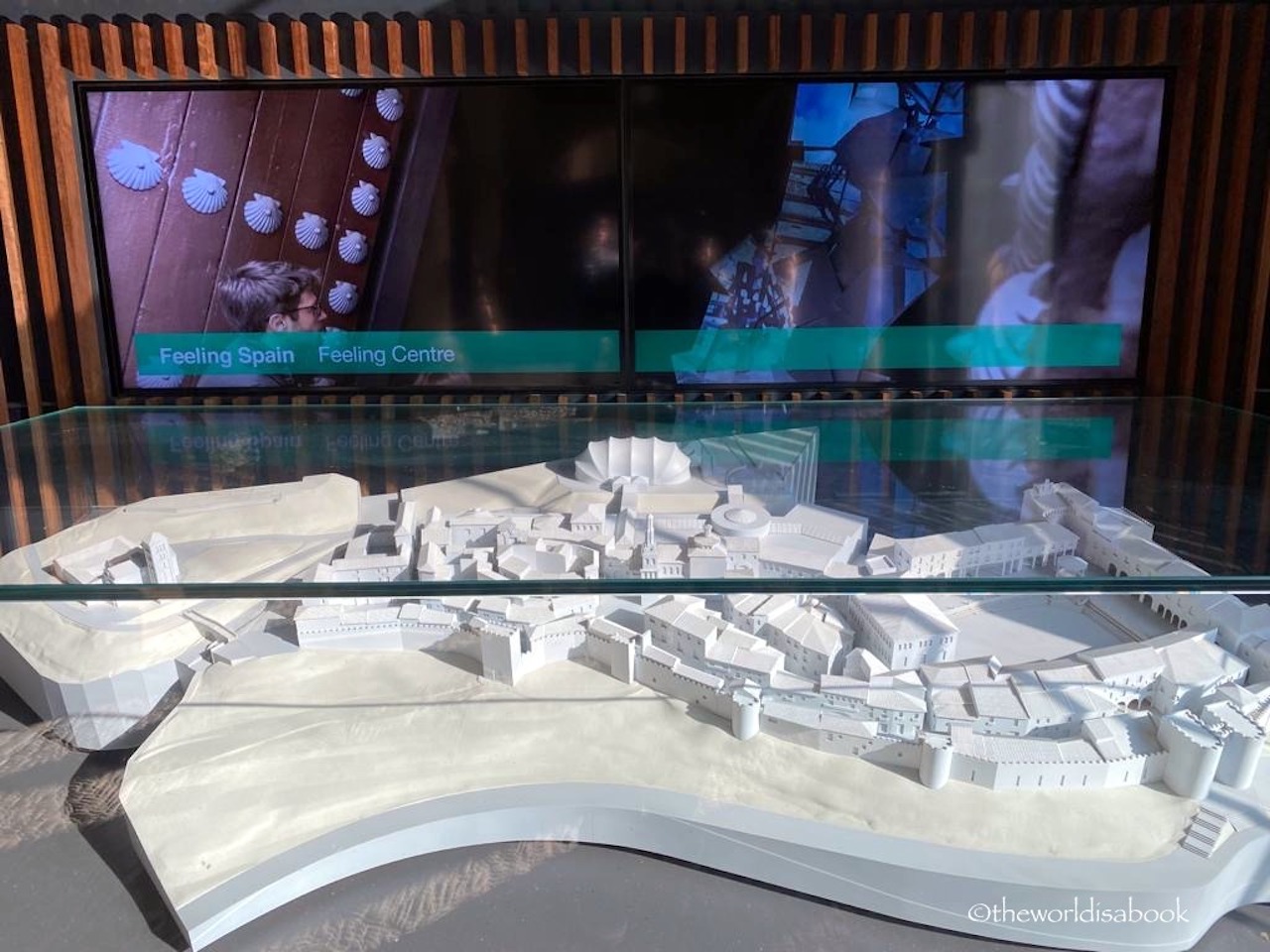
The museum also has a sculpture garden with over 35 large sculptures from 27 various artists. It leads to a platform towards the back area that offered beautiful views of Barcelona.
Nearby was the Monastery of Sant Miquel which represents a Romanesque building and drew inspiration from a few Catalan monasteries located in towns like Girona and Bages. The structure has a chapel, cloister, garden and banquet halls. It is located on Poble Espanyo’s highest point so the views are great.
Poble Espanyol has about 20 traditional crafts workshops or factories where visitors can watch craftsmen produce unique products that make for great souvenirs. These crafts range from leather goods, jewelry, pottery and glass blowers.
Since it was New Year’s Day during our visit, most of the shops were closed and the craftsmen weren’t around. But, we saw some of their workshops adjacent to the stores.
There are a variety of bars and restaurants within Poble Espanyol representing Spanish cuisines from diverse regions. Of course, you can also find Spanish staples at most of the places. Some offer outdoor dining.
We ate at Casa Massana Restaurant. It was family-friendly and had a vast assortment of food. We ate seafood paella, squid-ink paella, patatas bravas with alioli sauce and of course, a pitcher of Sangria for the adults.
Poble Espanyol offered glimpses of Spain’s regions and diverse culture. It provided inspiration for places to visit. We’ve visited Spain three times and realized there was so much more for us to explore and our travel wish list just expanded. It provided a mixture of great architecture, art, crafts, food, shops, was very educational and a great place to wander around. Put it on your Barcelona itinerary.
Tips for Visiting Poble Espanyol
- Buy tickets online to save time and money (about 10% per ticket). There were discounts for buying online and you can just walk into the entrance area.
- Family Pack tickets are available for two adults and two children ages 4-12. Tickets are also discounted if visiting at night after 8:30 PM.
- Combine your visit by going to the nearby Montjuic area. The Magic Fountain shows are usually on Thursday, Friday and Saturday starting around 8 PM. Check their website for updated times during your visit. There is also the nearby Museu Nacional d’Art de Catalunya (MNAC) and cable car to Montjuic castle.
- There is an option to rent an audio guide. We decided not to rent one and just walk around. There were many signs along the way telling you what the structures were and which part of Spain they could be found. Rental price was minimum but had a 20 Euro deposit.
- Get there early. While we got lucky visiting on a holiday and most likely sleeping in after New Year’s Eve festivities, that will not be the case for most other days.
- Poble Espanyol is open 365 days a year. Though, hours may be shorter during the holiday periods. It is a good place to go if you are in Barcelona during the holidays and many places are closed.
- Luggage lockers available near the entrance if you need to store bulky items.
- Check the events page calendar, especially if you’re visiting during the summer and on weekends, for what’s happening at the village that can include Flamenco shows and/or concerts.
- How to get there: The closest Metro station is Espanya on Line 1 and Line 3. It was about a 20-minute leisurely walk. This is also a stop in many of the Hop-On Hop-Off Buses.
[stextbox id=”black” bgcolor=”b0c4de”] If you liked this post, please get the latest posts and updates free. Follow me on Twitter, Instagram, or Facebook. Thanks! [/stextbox]
Pin it for later!
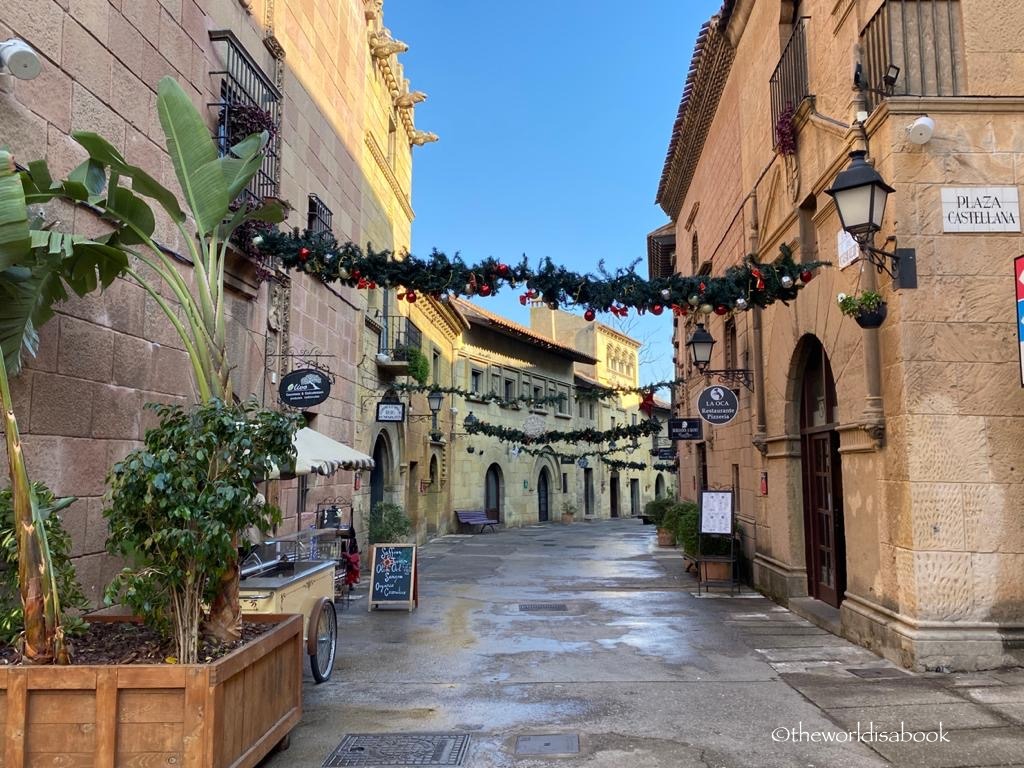
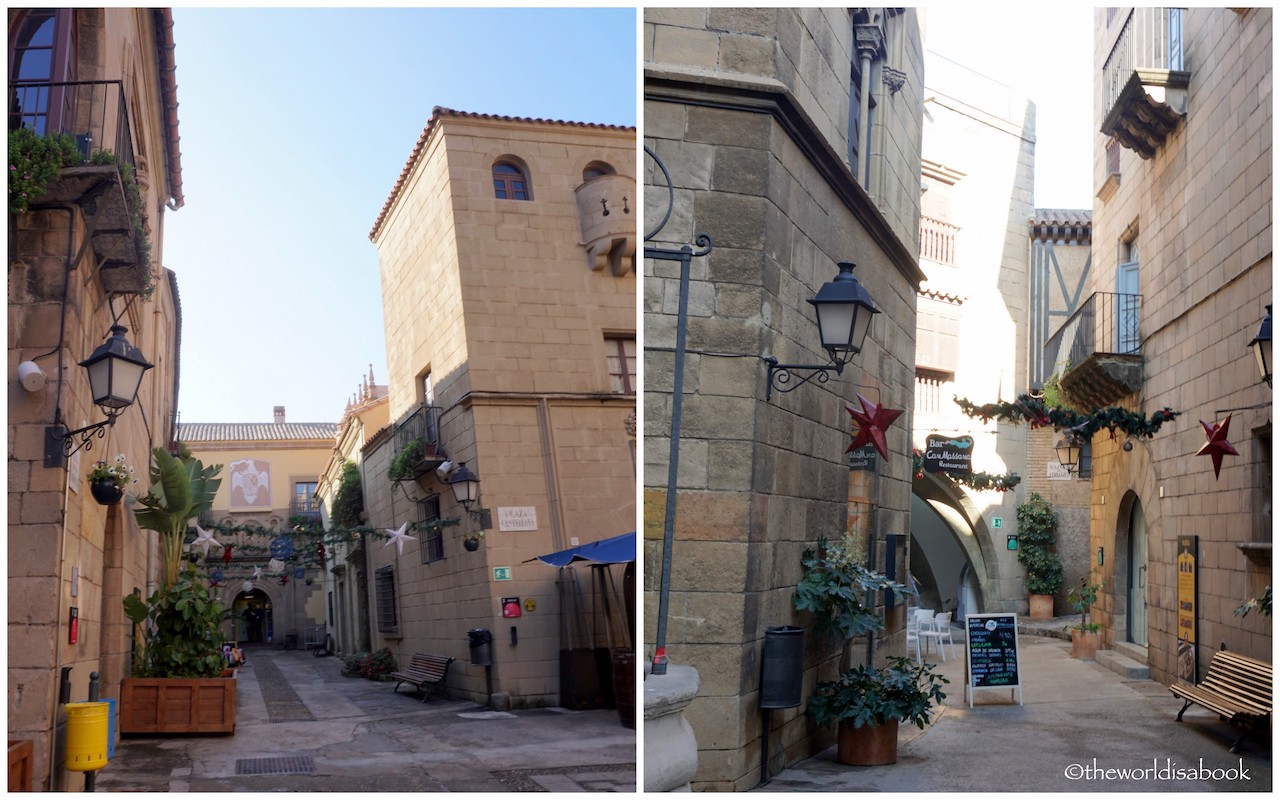
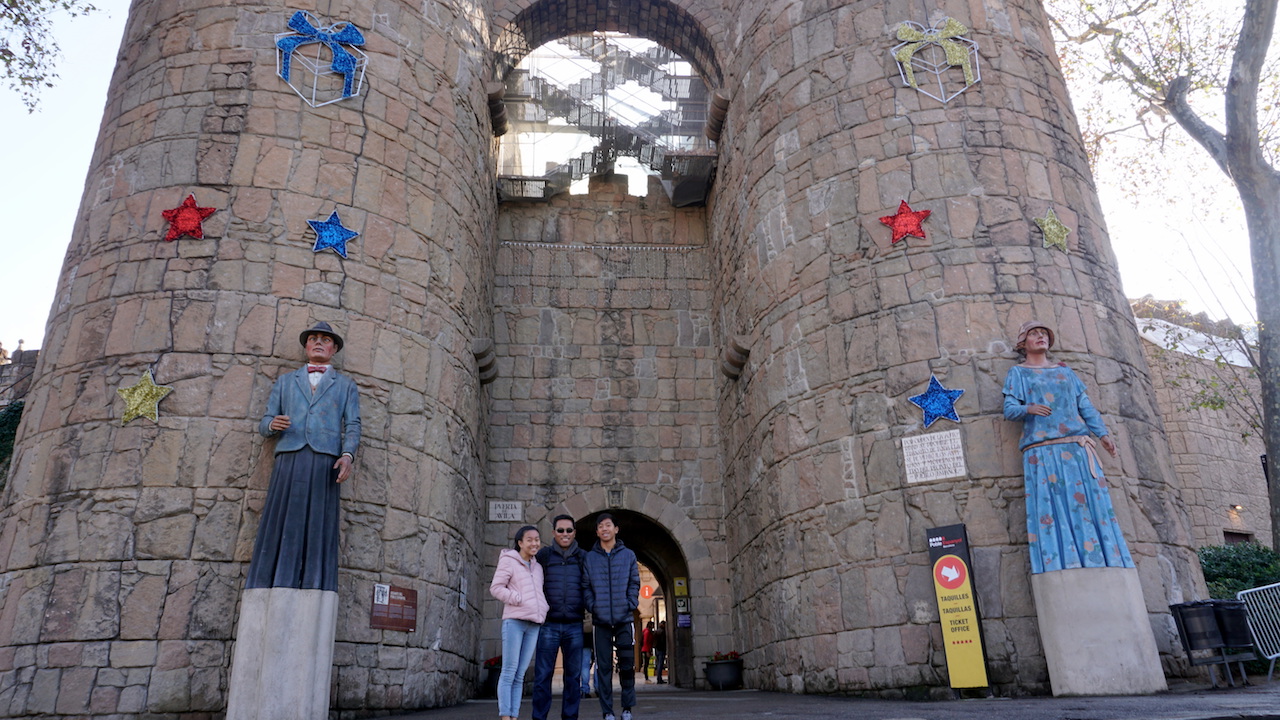
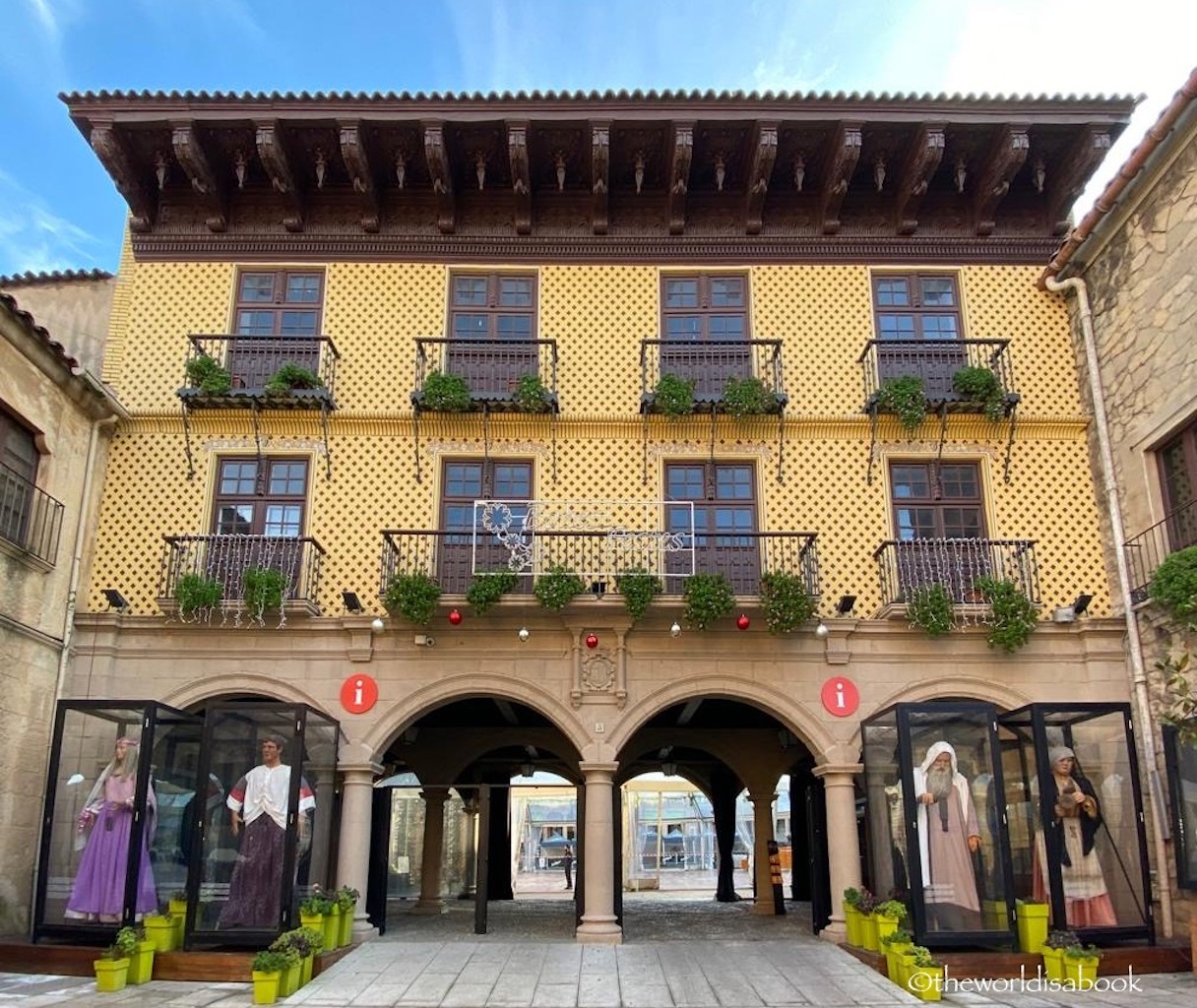
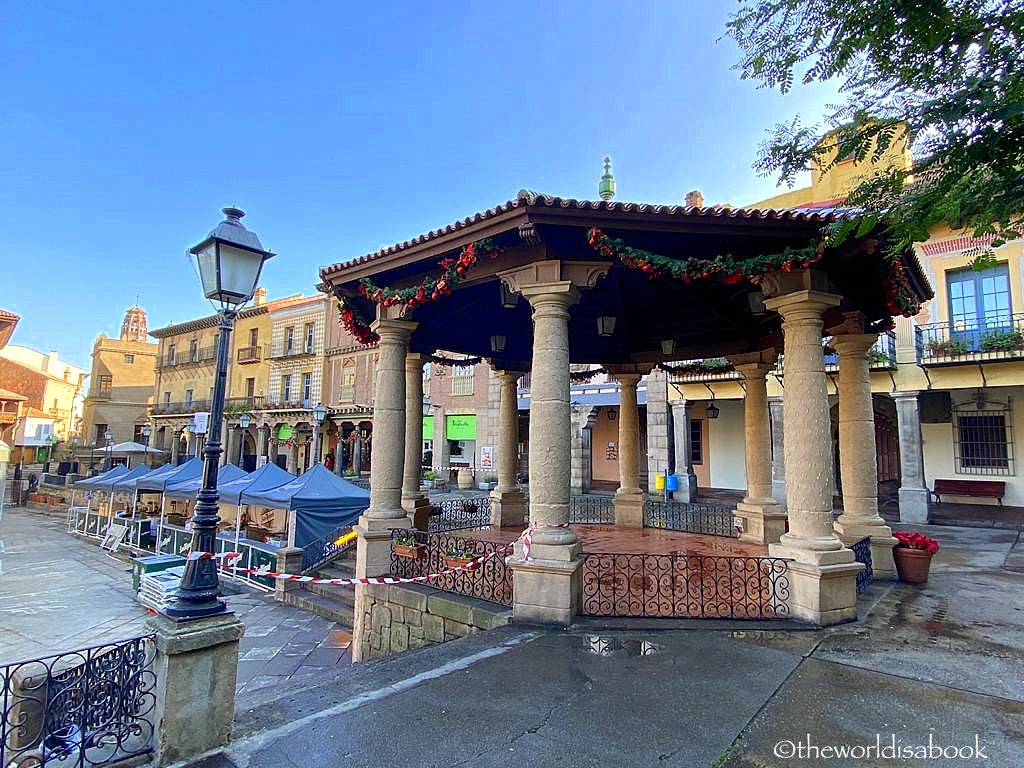
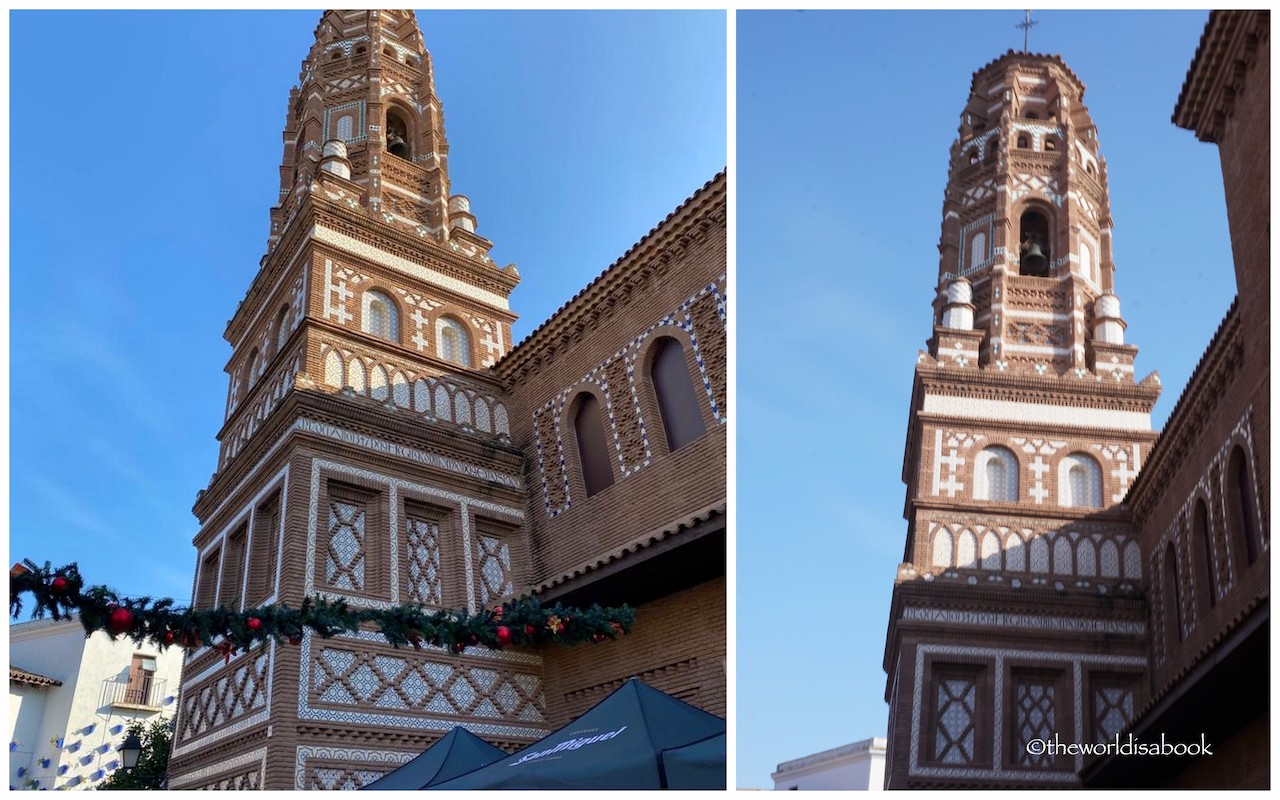
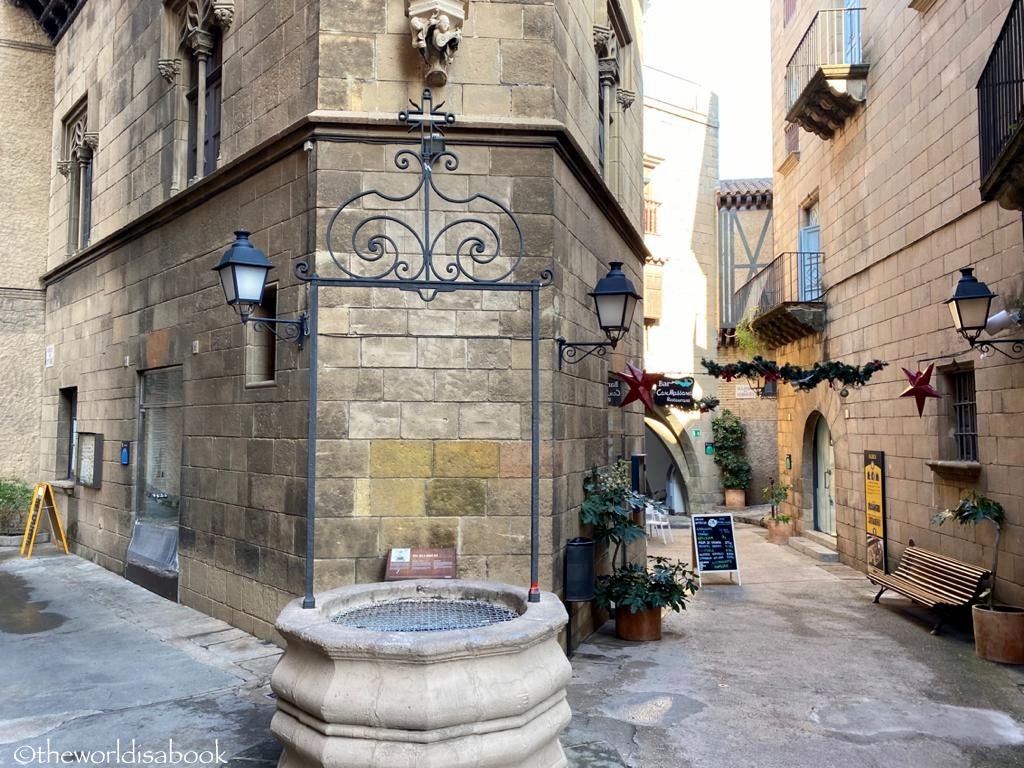
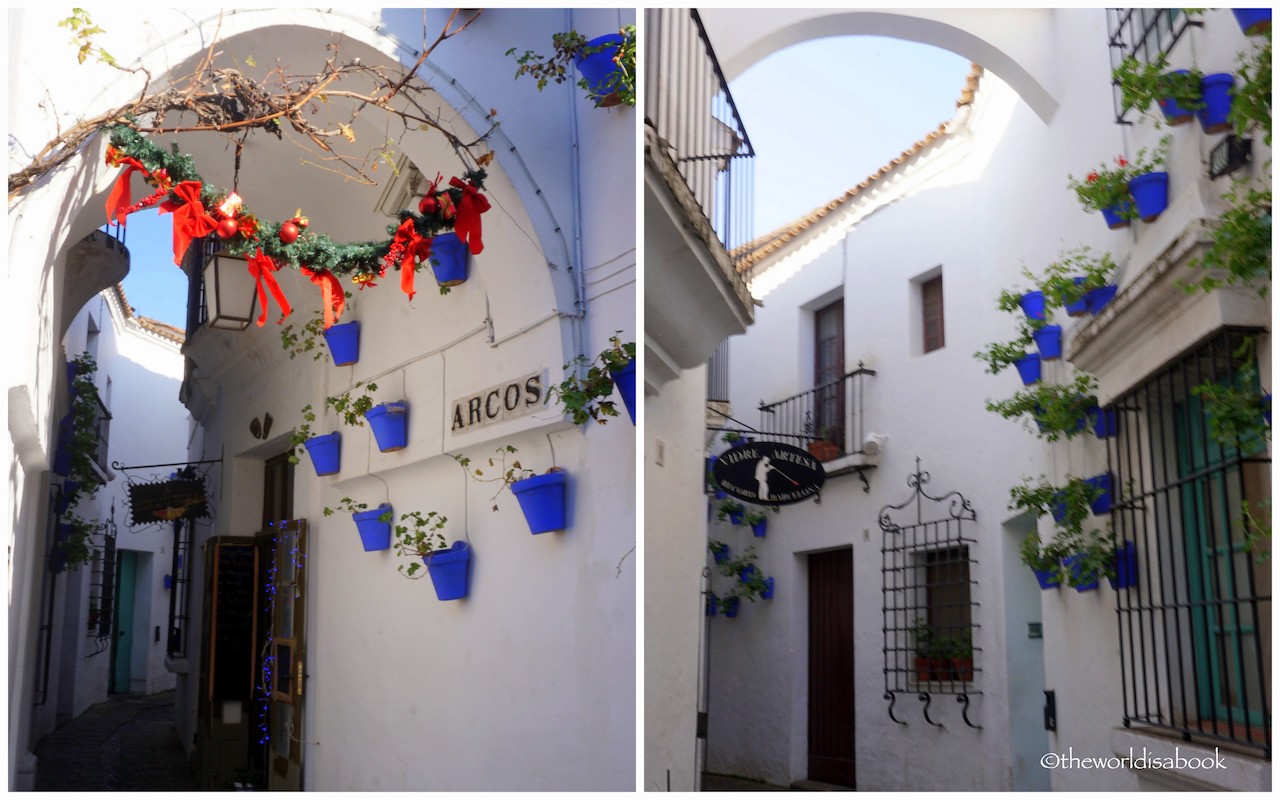
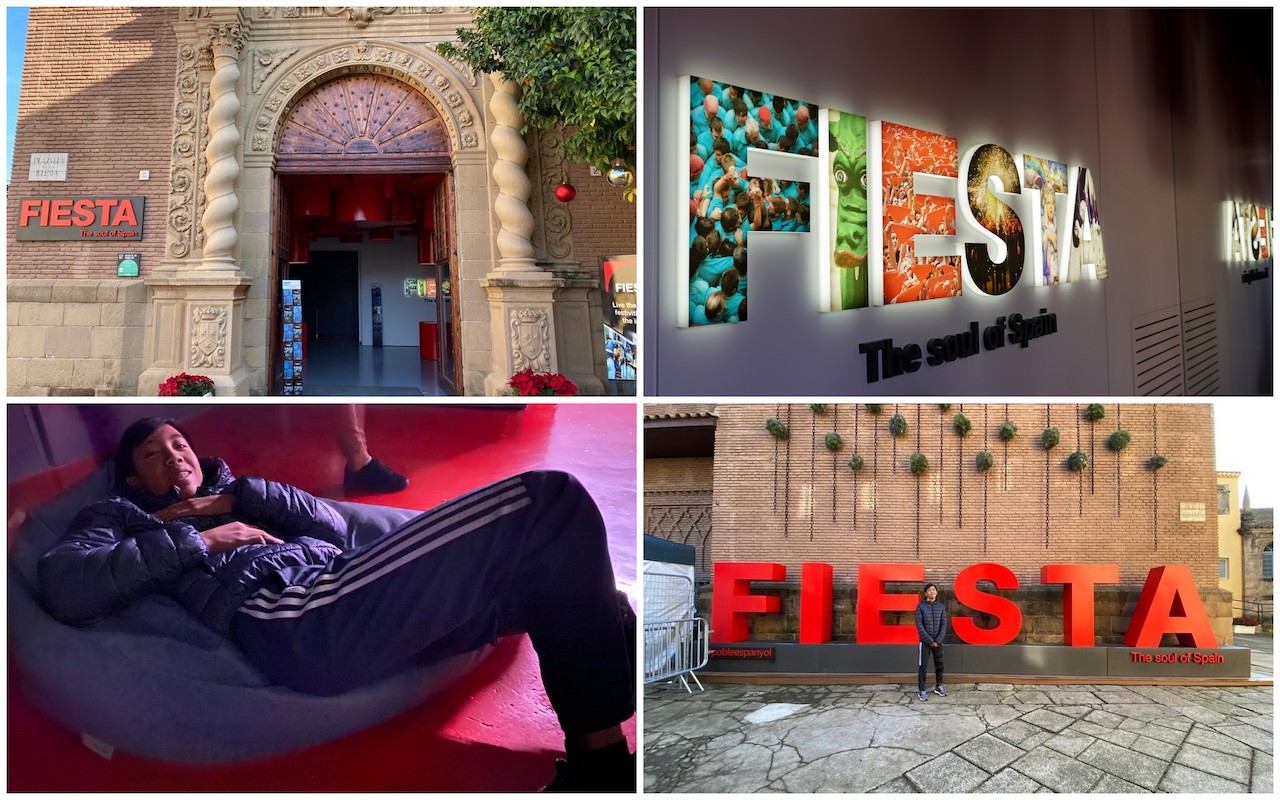
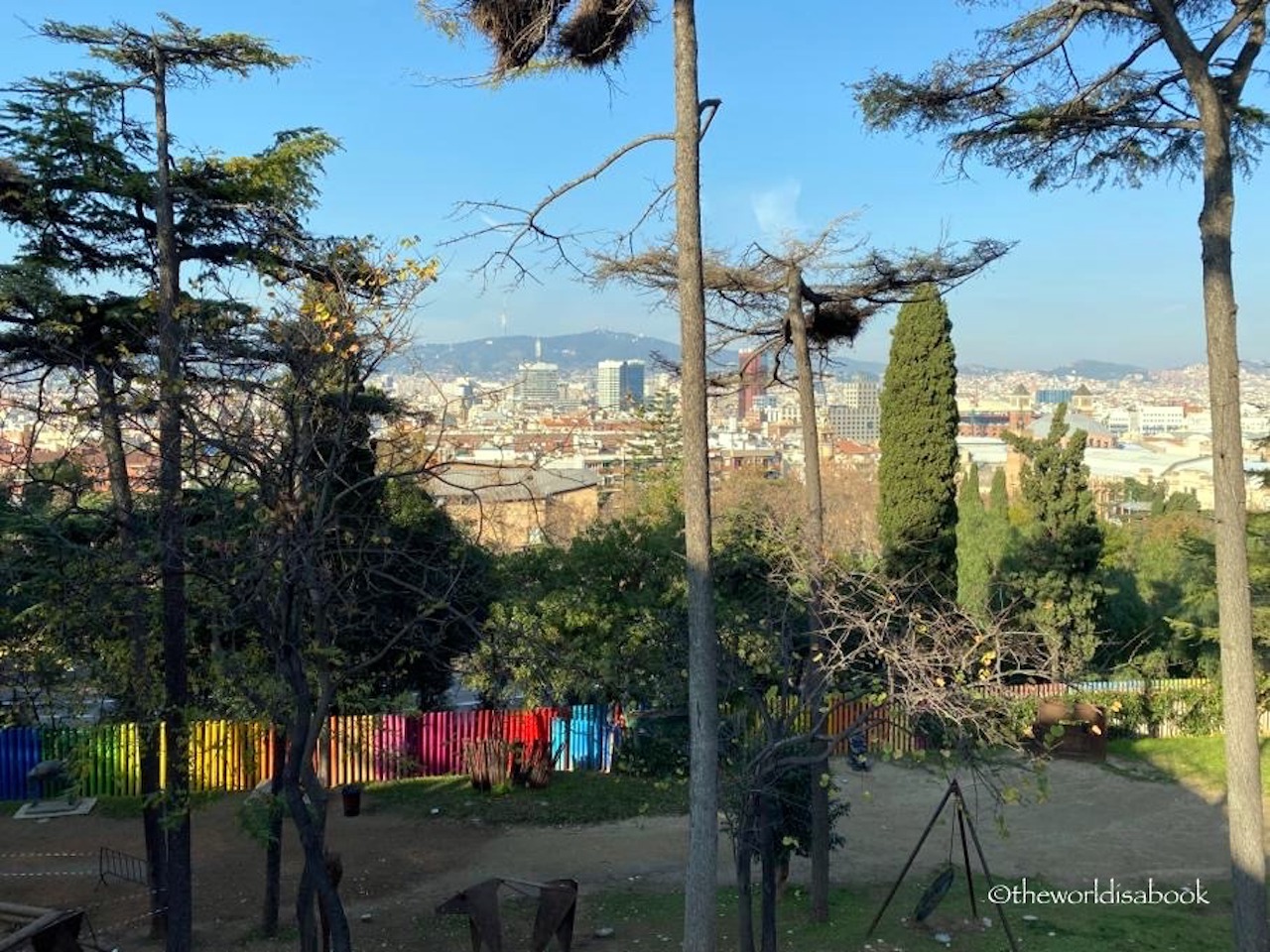
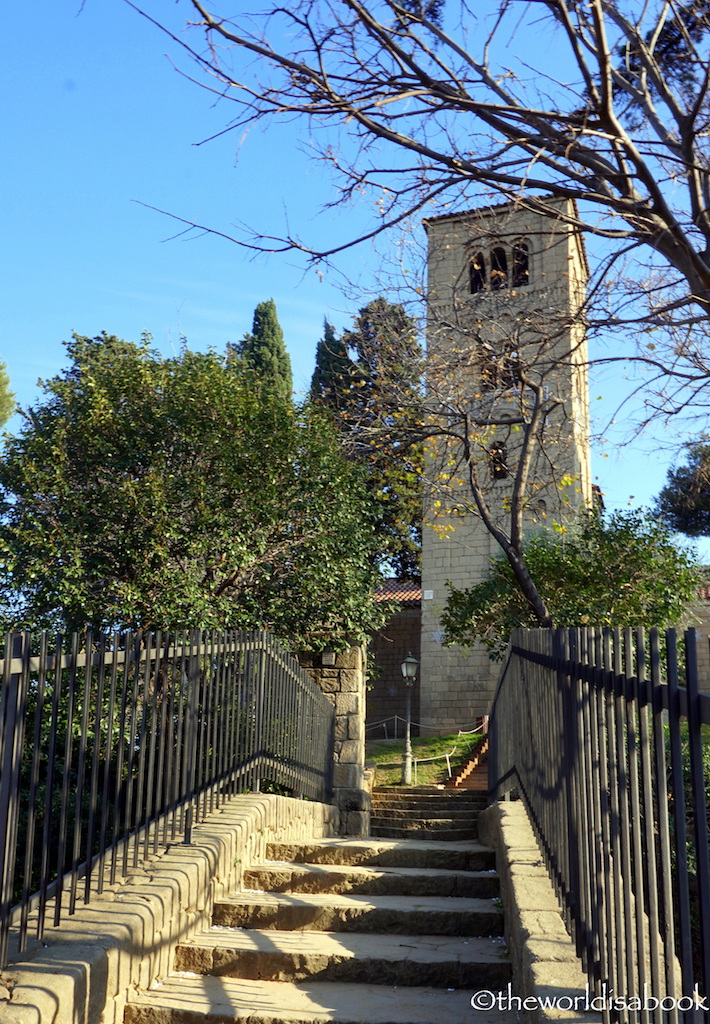
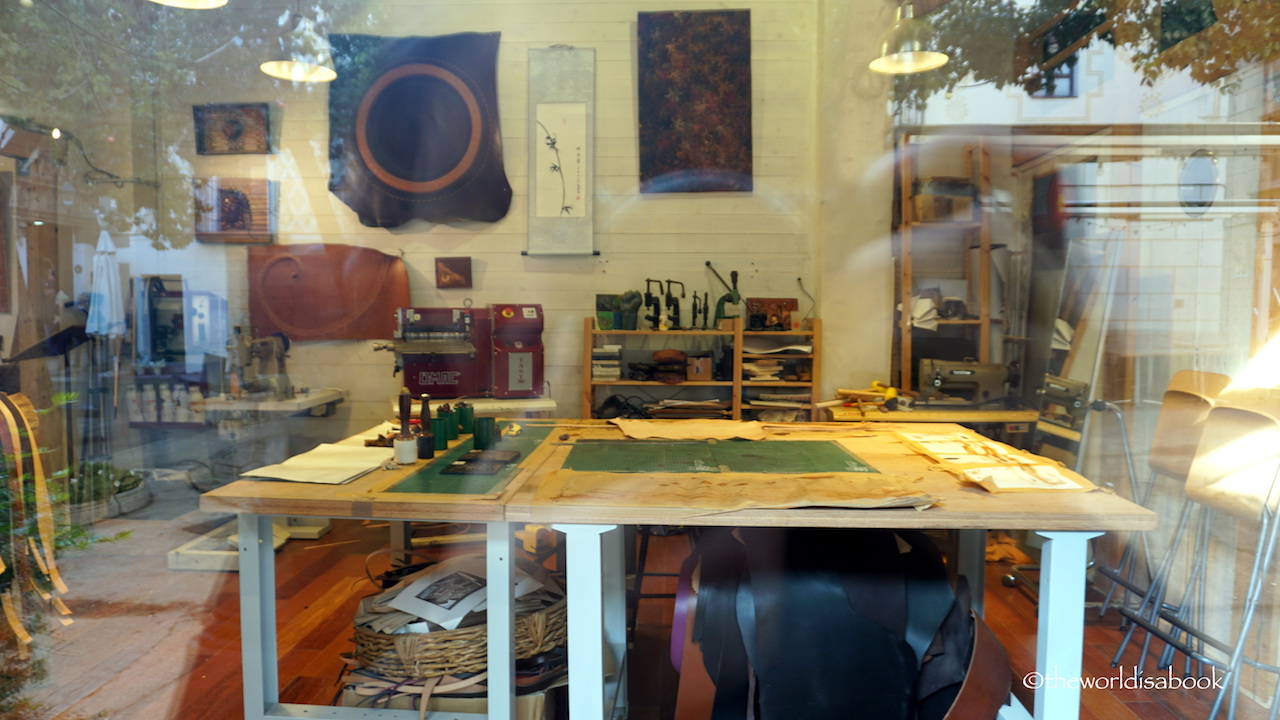
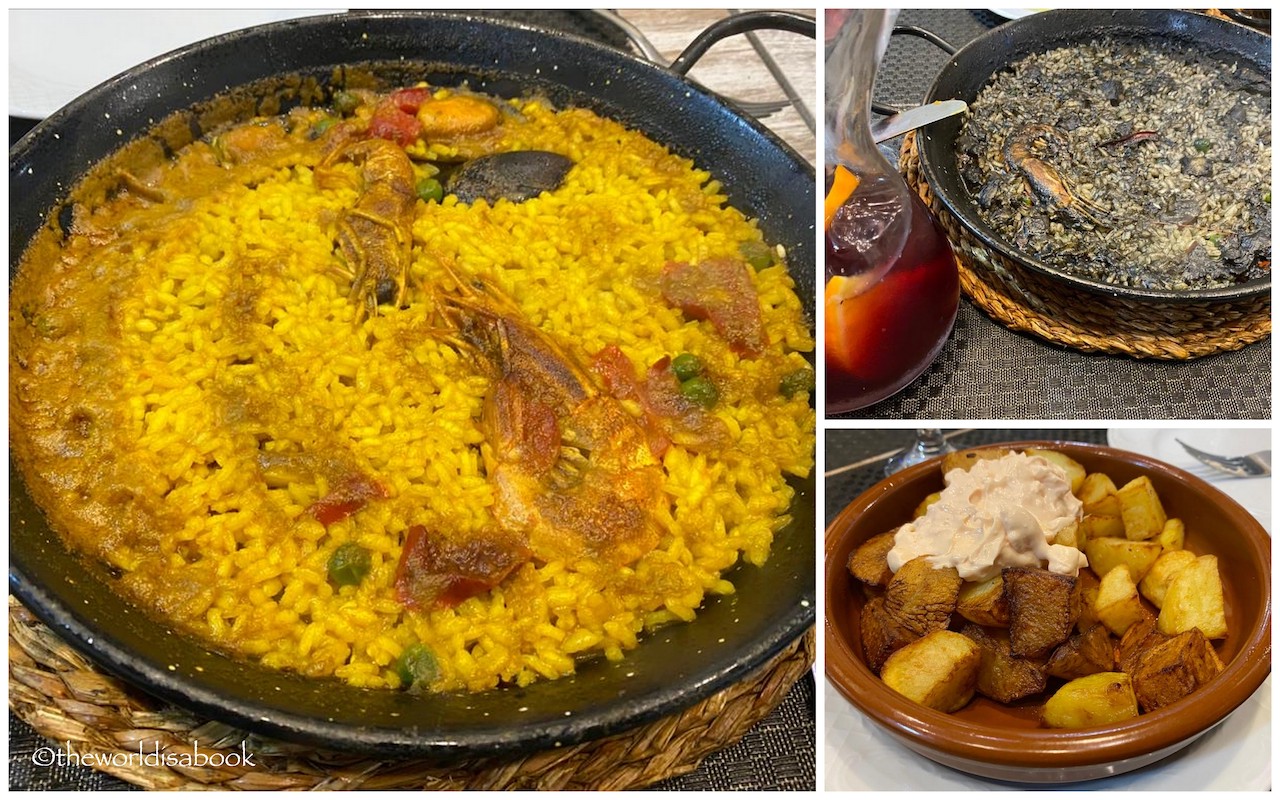
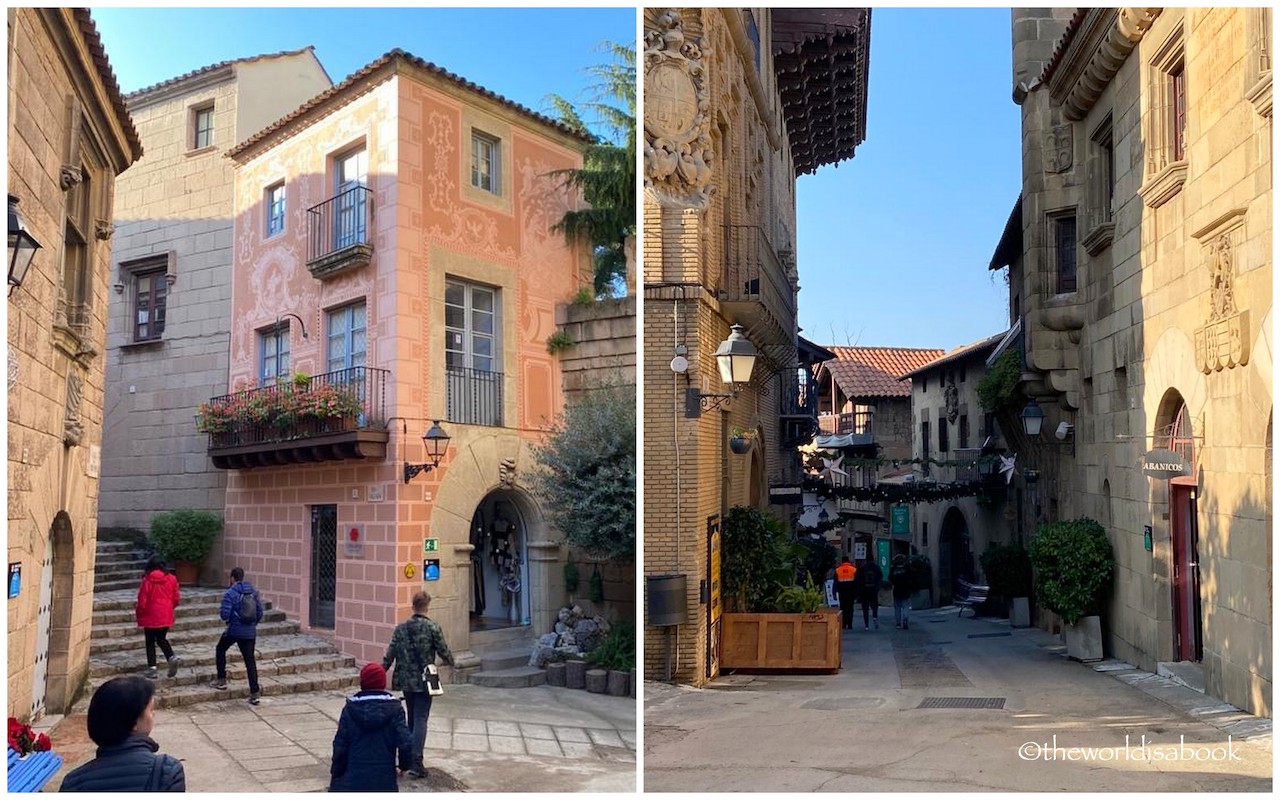
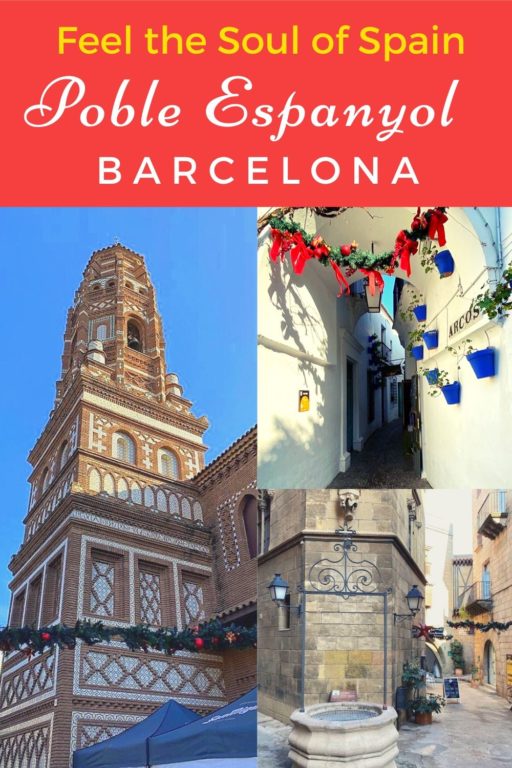
This area looks great. The buildings are so pretty! It looks like you had a great time that and who could pass up on the paella, and patatas braves! Thank you for sharing.
Hello, yeah this article is actually nice and I have learned lot of things from it on the topic of blogging.
thanks.